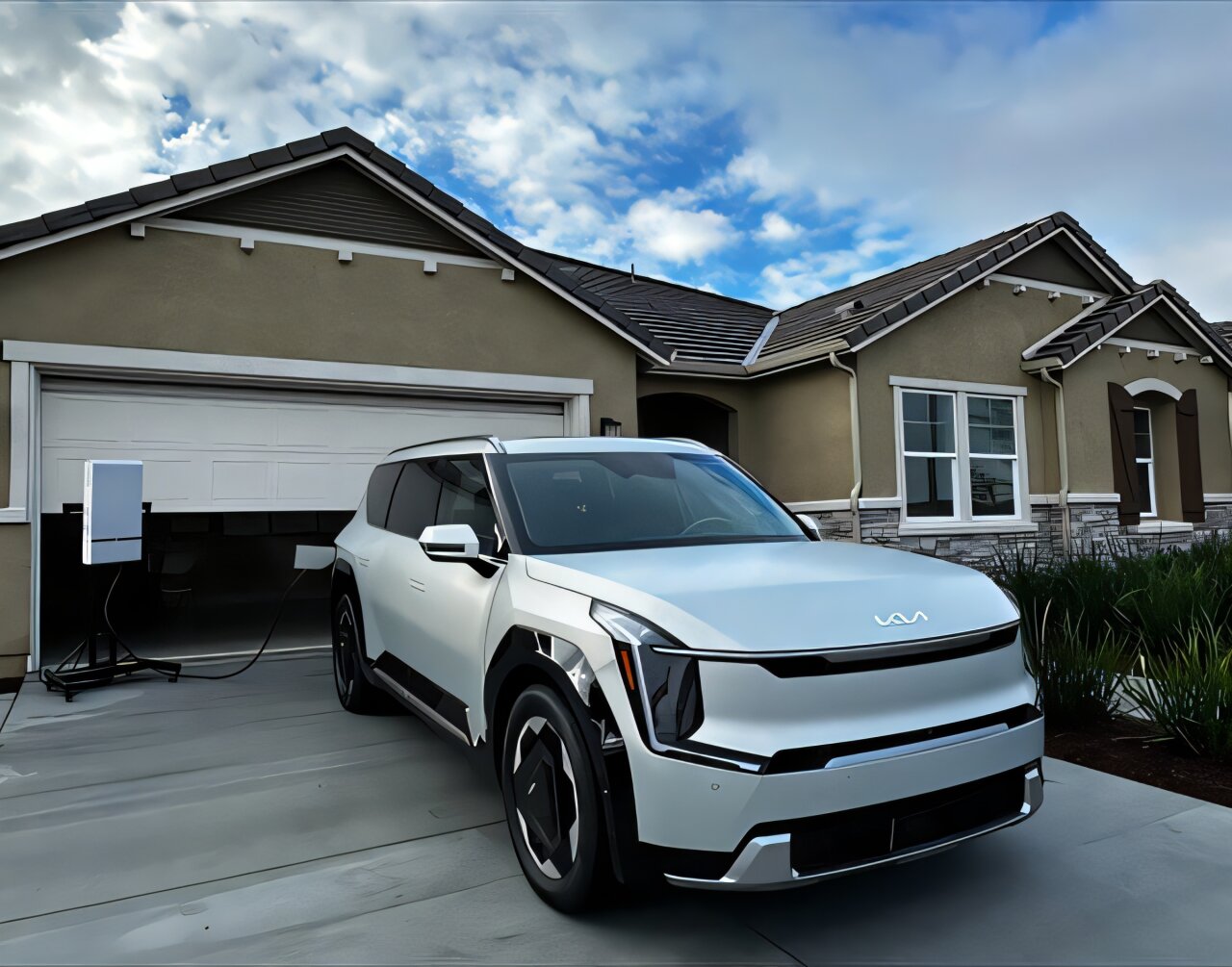
Six homes in Menifee, Calif., have been outfitted with the ability to tap energy from an electric vehicle to power home loads during both grid-tied and islanded (off-grid) conditions. This marks the first demonstration of vehicle-to-home technology for the mass market utilizing two purpose-built commercial products—a bidirectional charger and a mass market V2H-enabled SUV.
The demonstration is a result of a four-year collaboration between Kia America, Hyundai America Technical Center, Hyundai Motor Group and the UC Irvine Advanced Power and Energy Program. Kia provided an EV6 outfitted with prototype V2H software, while Wallbox supplied a prototype bidirectional charger. APEP researchers conducted controlled testing in the APEP Residential Laboratory followed by field trials with a prototype V2H-enabled Kia EV9 in a model home, as part of the APEP-led U.S. Department of Energy “Connected Microgrid” project in Menifee.
The results of the APEP research were published this month in the Journal of Energy Conversion and Management. In May, a commercial Wallbox Quasar 2 bidirectional charger was installed and commissioned with a commercial Kia EV9 at the APEP Residential Laboratory. In August, Quasar 2 units were deployed in six Menifee homes, each paired with a Kia EV9 for a two-year evaluation of both performance and the user experience in real residential settings.
“This initiative illustrates the importance of collaboration between academia and industry,” said project director and APEP founding director Scott Samuelsen, UC Irvine professor of mechanical and aerospace engineering. “Real-world deployment of bidirectional charging is essential for gathering the data, and the technical and customer adaptation insights needed to scale V2H deployment across the grid.”
One of the key benefits of V2H is the potential to lower homeowner electricity costs by using stored energy when rates are highest (e.g., during the 4–8 p.m. peak demand). A second benefit is to capture renewable energy from roof-mounted solar panels stored during the day that would otherwise be sent to the grid and use the captured energy to serve home loads at another time. In both cases, V2H relieves strain on the grid.
During a grid outage, another benefit of V2H is to keep the home energized for several days, given that the energy density of the vehicle battery is up to 10 times that of typical home batteries.
V2H also provides environmental benefits by reducing air pollutant emissions from power plants serving the grid, and by providing a clean alternative to purchasing a gasoline-powered combustion back-up home generator.
More information:
Shan Tian et al, System-level demonstration of vehicle-to-home integration with a mass-market EV, Energy Conversion and Management (2026). DOI: 10.1016/j.enconman.2025.120629
University of California, Irvine
Citation:
Vehicle-to-home charging technology launches for the mass market (2025, October 28)
retrieved 28 October 2025
from https://techxplore.com/news/2025-10-vehicle-home-technology-mass.html
This document is subject to copyright. Apart from any fair dealing for the purpose of private study or research, no
part may be reproduced without the written permission. The content is provided for information purposes only.









